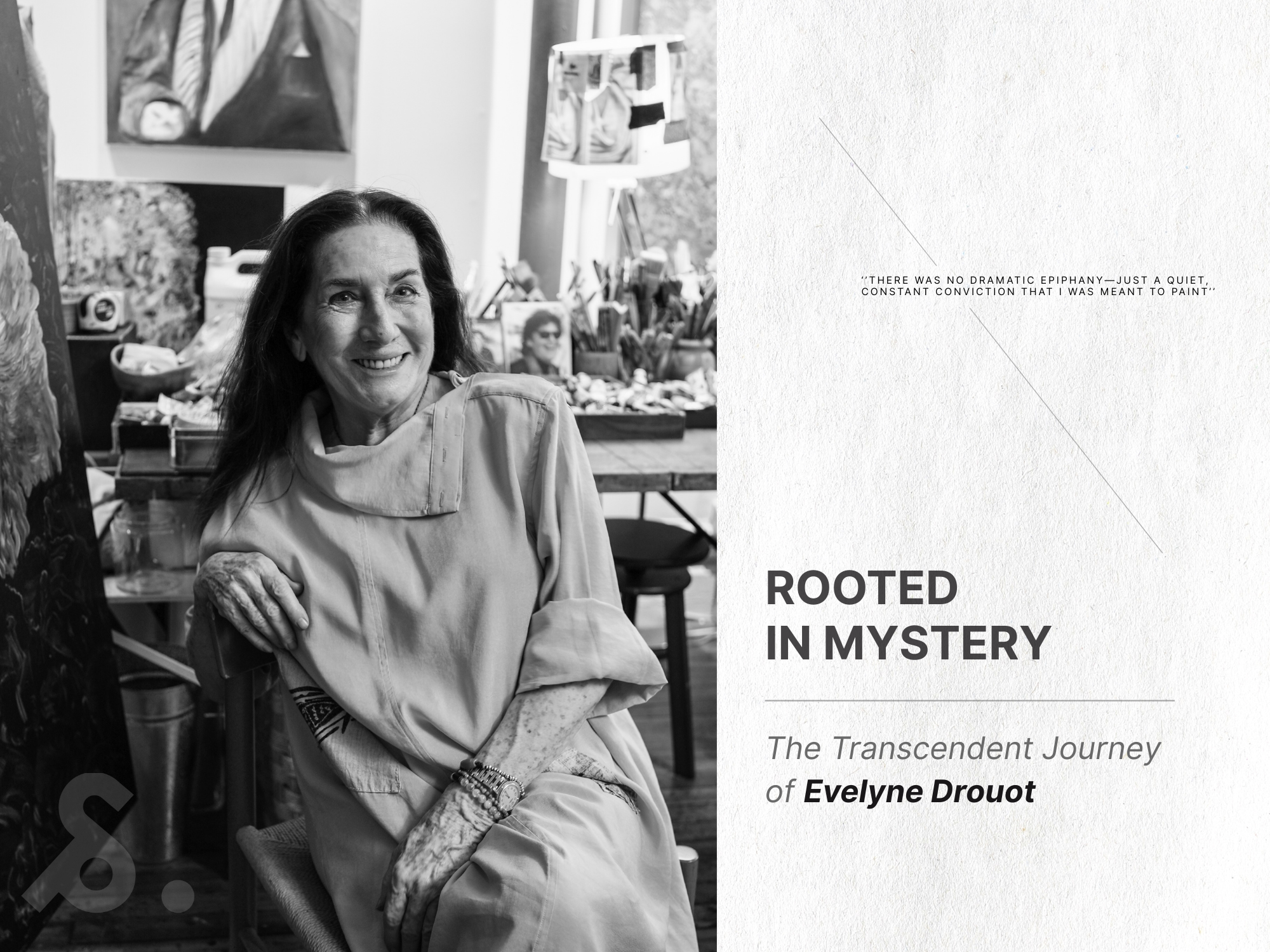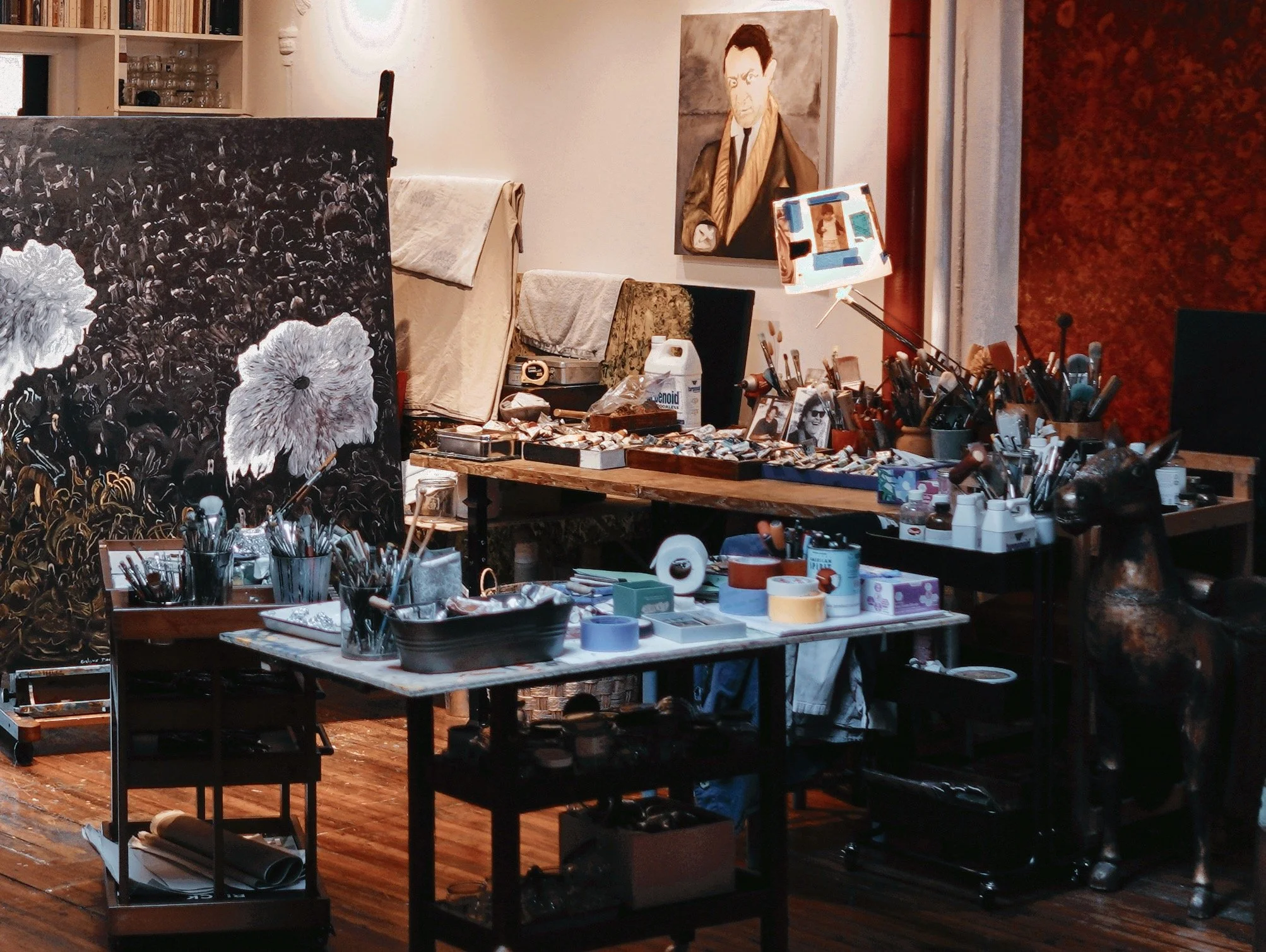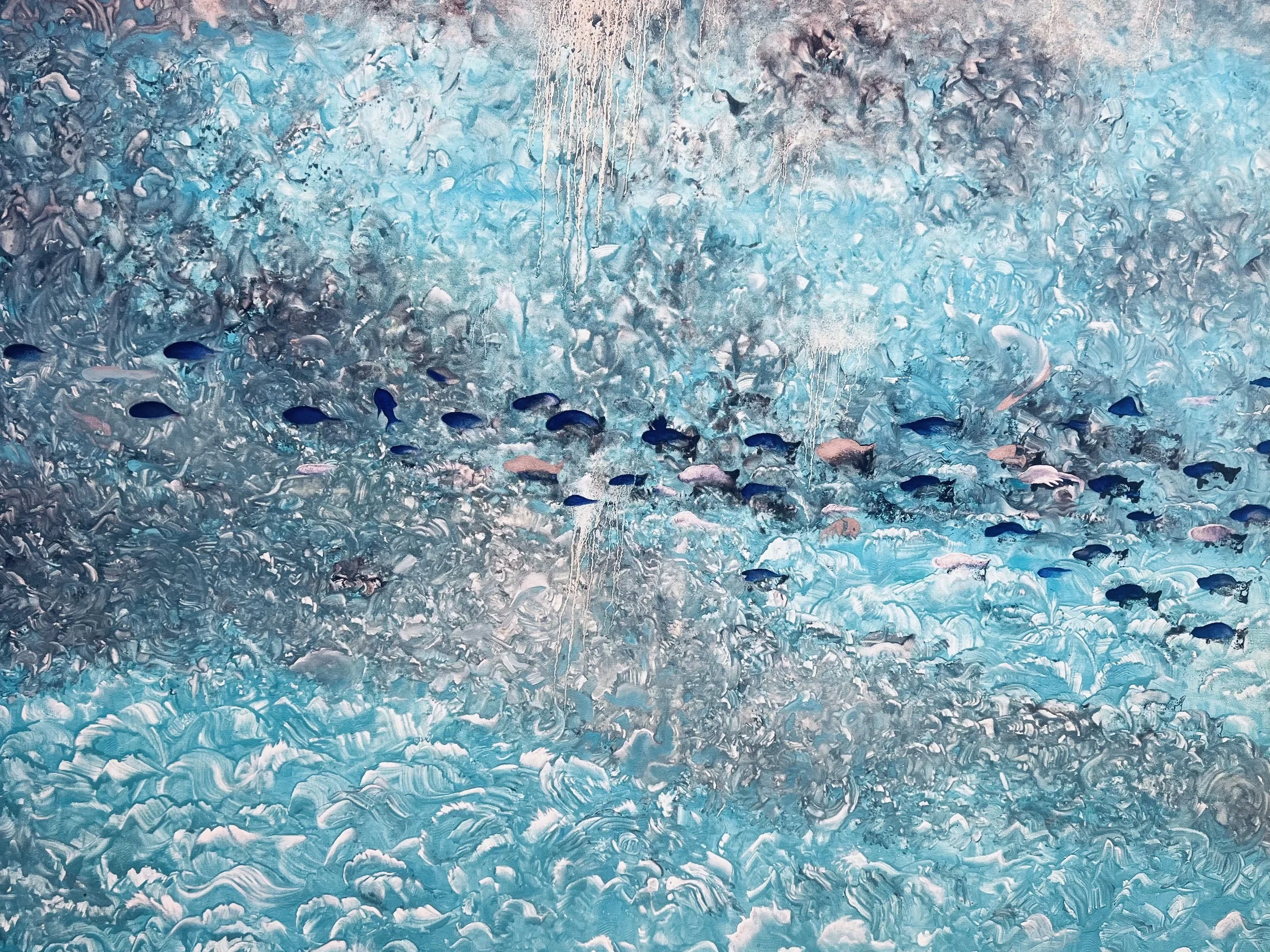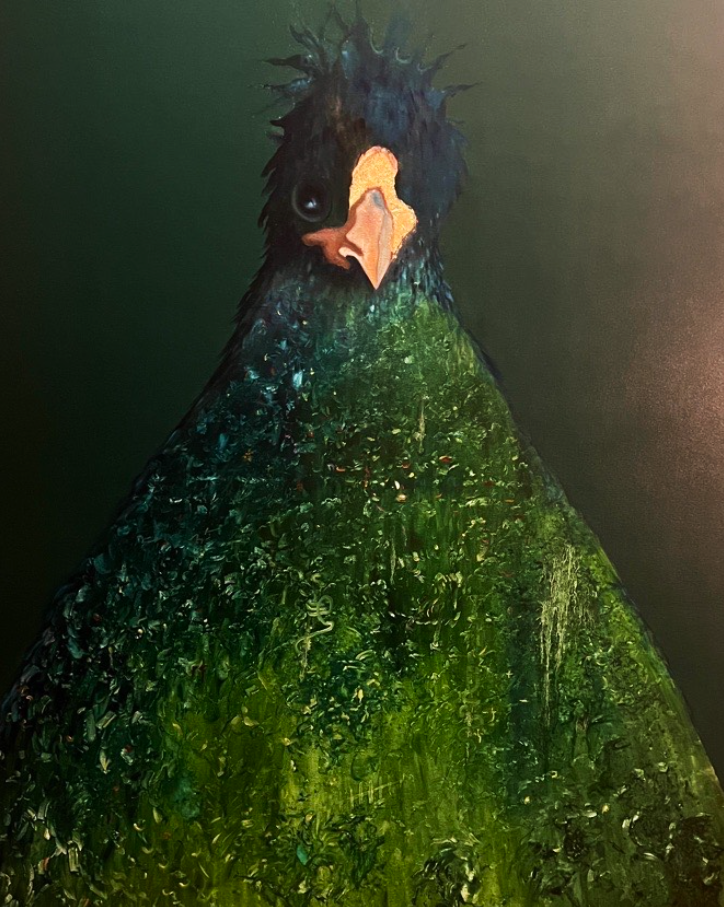Rooted in Mystery: The Transcendent Journey of Evelyne Drouot
A life painted across continents, cultures, and decades — where every canvas holds a trace of mystery.
There are artists whose works speak of solitude, color, and form—and then there are artists like Evelyne Drouot, whose entire life is a canvas. Born in 1949 in Cavaillon, France, and largely self-taught, Evelynen’s career spans continents and decades, echoing a life steeped in intuition, cultural immersion, and spiritual openness. Her paintings, luminous and emotionally raw, do not simply represent the world—they metabolize it.
From her earliest creative impulses as a teenager in Provence to her latest abstract explorations in New York City, Evelyne has always followed a path guided more by emotion than ambition. “I began painting at age 15,” she says. “There was no dramatic epiphany—just a quiet, constant conviction that I was meant to paint.”
In the 1970s, her path took her through Vietnam, Laos, Thailand, and India—part of an eleven-year sojourn in Southeast Asia that would leave a profound and lasting mark. “The flowing lines, the sacred relationship to nature, the poetic symbolism of Asian art—it entered me. I didn’t realize it then, but that visual language would stay in my work forever.”
Evelyne held her first solo show in 1981 at the French Institute in Bangkok, where she had become part of a vibrant expatriate creative circle. It was a defining moment—an early validation of a practice that, up to that point, had been deeply personal.
In the decades that followed, her path continued to unfold across New York, Yerevan, Moscow, Stuttgart, the Bahamas, and Miami. Each stop not only brought new surroundings but new textures to her canvas. From group shows at the United Nations and Art Basel Miami to solo exhibitions in Brooklyn, Coco-Mat NYC, and the French Cultural Center in Armenia, her works have quietly made their way into conversations across borders and generations.
Q: You've exhibited across Europe, Asia, and the U.S.—how has showing your work in such diverse contexts affected your creative evolution?
“Every exhibition is a mirror—and sometimes, the reflection surprises you.”
Every exhibition is a kind of mirror. You see how others receive what you've made—and sometimes, that reflection surprises you. I’ve shown in places where people connect deeply, and others where they simply move on. But every show adds to the journey. Especially the one-woman shows—they allow for full immersion. Those moments gave me courage to keep evolving.
Today, Evelyne’s work leans heavily into abstraction—a visual language she calls “a quantum space” of infinite possibilities. Yet, the ghosts of earlier chapters remain. Birds appear as metaphors for freedom and displacement. Brushstrokes gesture toward landscapes half-remembered. And somewhere beneath the layers, there is always an echo of her travels—of being between cultures, languages, and selves.
Her studio practice is intuitive, unpremeditated. “Sometimes I begin with a memory, a dream,” she explains. “But often, I start with no idea at all—just colors. I let my hands move. And then something surfaces—forms, emotions, traces.”
Living and working in New York for the better part of four decades, Evelyne considers the city her deepest anchor. “It’s home,” she says. “The place I’ve lived the longest. It's energy keeps me moving. Even when I doubt myself, New York gives me a reason to keep going.”
Q: With such a long career behind you, what do you hope people take from your work today?
“When there’s a silent resonance, that’s where the joy is.”
And yet, Evelyne is far from finished. In the last few years alone, she’s exhibited in group shows at Salomon Arts Gallery in Tribeca, including Hold Me (2022) and its 2024 continuation—introducing a new generation of collectors and curators to her work. Her potential, if anything, is only growing.
Q: Do you still feel the desire to explore new directions in your work? Or are you focused more on legacy?
I don’t think much about legacy. I think about what’s next. Painting is a journey—of culture, of self, of transformation. It’s rooted in lived experience, but always open to mystery. That’s what keeps me going.
In an era increasingly shaped by artificial intelligence—where styles can be mimicked, algorithms anticipate trends, and artworks can be generated by code—Wassman remains grounded in the irreplaceable human dimension of artmaking. “Nothing can replace lived experience,” she reflects. “Even if technology becomes a part of our lives, we, as humans, are constantly evolving—and so must our art. My work continues to change because it reflects the people, the landscapes, and the visions I’ve lived through.”
For her, inspiration doesn’t come from prediction, but from presence. “Even now, I begin a painting not knowing where it will go. It’s not about output—it’s about uncovering something, letting memory or feeling shape form and color. That mystery is essential. That’s what makes art human.”
L'EMPEREUR
2021, Oil on Canvas, 72 x 48 in
Evelyne’s art is not an answer—it’s an invitation. To feel, to remember, to question. In a time of digital overproduction and aesthetic algorithms, her work reminds us of something primal: that creation is human, messy, mystical. That a life fully lived—across cities, languages, and eras—can become a kind of visual prayer.
This fall, she will be featured in an upcoming group exhibition at SPACS—a new cultural space NYC, dedicated to artistic dialogue and cross-cultural exploration.
Website: www.evelynedrouot.com
Instagram: evelynedrouot













